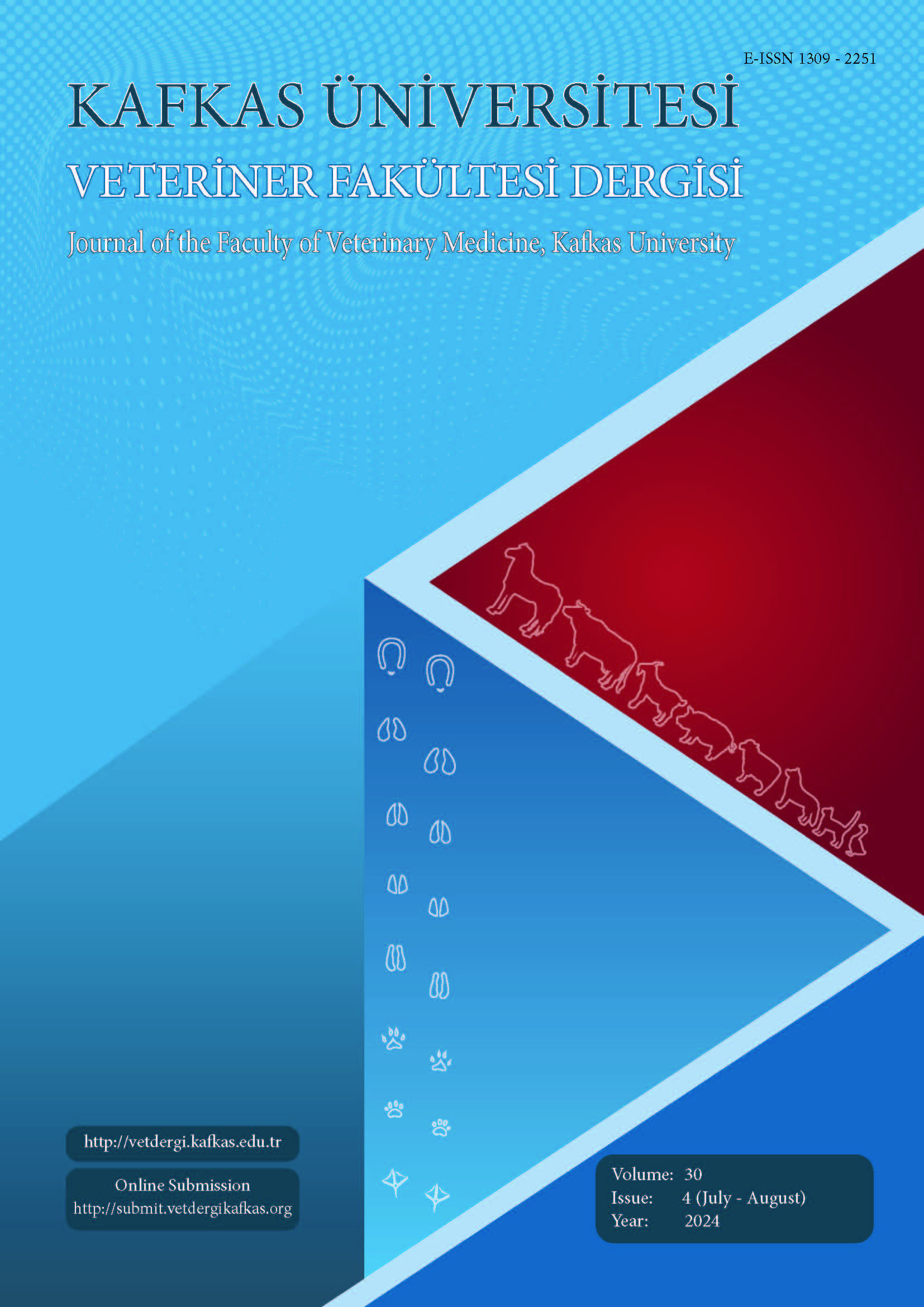
This journal is licensed under a Creative Commons Attribution-NonCommercial 4.0 International License
Kafkas Üniversitesi Veteriner Fakültesi Dergisi
2024 , Vol 30 , Issue 4
Determination of the Effect of GDF9, BMP15, BMPR1B Gene Polymorphism, and Environmental Factors for Fecundity by Logistic Regression Analysis in Kangal Akkaraman Sheep
1Erciyes University, Faculty of Veterinary Medicine, Department of Genetics, 38039, Kayseri, TÜRKİYE2Erciyes University, Faculty of Veterinary Medicine, Department of Biometrics, 38039, Kayseri, TÜRKİYE
3Erciyes University, Faculty of Veterinary Medicine, Department of Obstetrics and Gynecology, 38039, Kayseri, TÜRKİYE
4Erciyes University, Faculty of Veterinary Medicine, Department of Reproduction and Artificial Insemination, 38039, Kayseri, TÜRKİYE DOI : 10.9775/kvfd.2024.31761 Polymorphisms identified on the BMPR1B, BMP15, and GDF9 genes tend to increase multiple birth and ovulation rates in sheep. In the planned study, the productivity records of the flocks (approximately 41.000) collected from 2016 to 2022, belonging to the Public Breeding of Kangal Akkaraman Sheep in Sivas province TAGEM/58KAK2012-08 subproject of the Public Animal Breeding National Project, were used. Accordingly, the ear numbers of sheep that gave birth to at least two twins (n=96) and at least two singletons (n=96) were determined from 15 different farms relevant records. According to similar feeding characteristics, environmental variables were grouped as location, year-round feeding type, and seasonal feeding type. DNA groups were genotyped by the PCR-RFLP method for BMPR1B (FecB), BMP15 (FecXB, FecXG, FecXI, FecXH) and GDF9 (FecG) alleles. Accordingly, among the 6 SNPs examined, only the GDF9 gene-FecB SNP was determined polymorphic. Genotypic effect (FecB allele) and environmental effect variables (location, year-round feeding type, seasonal feeding type ) were also examined with a logistic model. It was determined that the relevant alleles and environmental variables did not have a statistically significant effect on the twinning phenotype. According to the results obtained, it was thought that the genes associated with multiple births in Kangal Akkaraman breed may have different variants specific to the breed. In addition, it is suggested that this character, which is affected by multiple genes, should be included in the planned breeding studies by considering the interaction of environmental variables and determining the variation of the related genes. In this respect, it is concluded that our study will guide the sequencing studies and multivariate analyses to be planned. Keywords : BMP15, BMPR1B, Fecundity, GDF9, Gene polymorphism, Logistic regression analysis, Sheep










